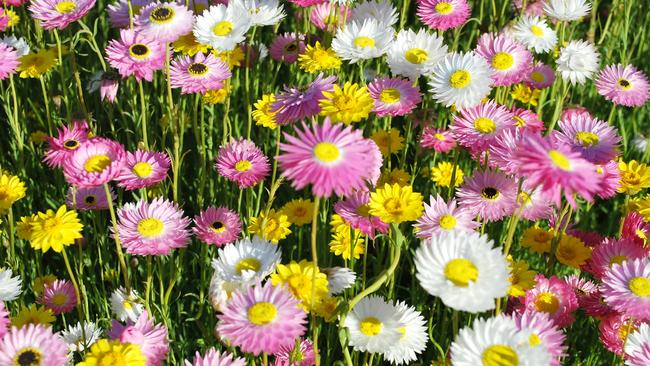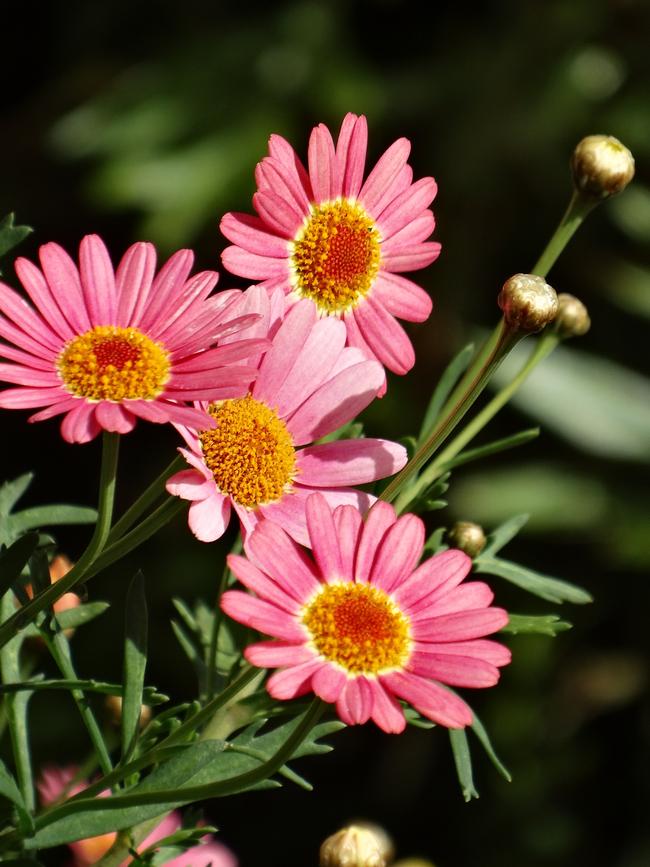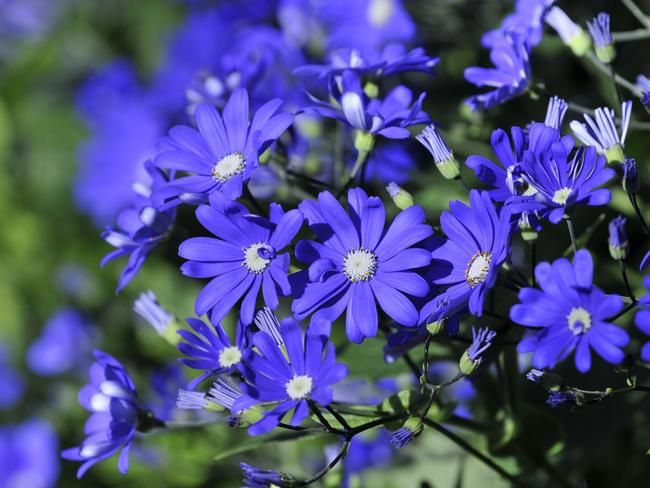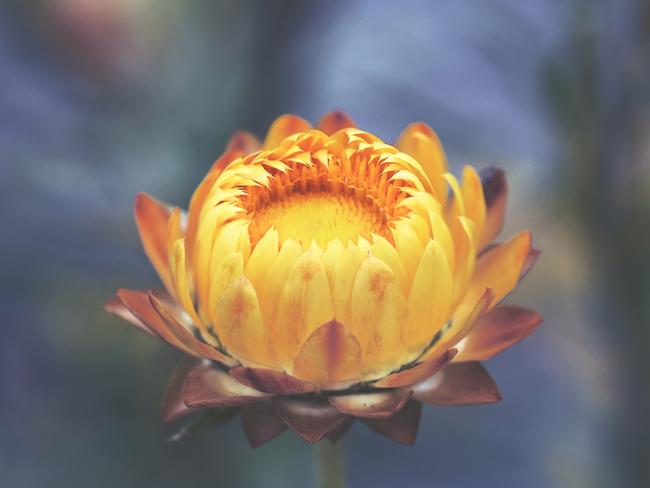Daisies: who doesn’t love ’em?
The daisy family is huge, containing more than 24,000 species. And it’s little wonder these flowers are so popular with gardeners.

Ask someone to draw a flower and chances are it will look like a daisy. The distinctive circle of petals radiating around a centre is pretty much what defines daisies but they’re more complex than you might think. A daisy isn’t actually a single flower but an “inflorescence”: a cluster of flowers. The outer petals are ray flowers or florets rather than just petals, and the centre is packed with numerous tiny disc florets. That’s where pollination takes place and seeds are formed.
The daisy family, Asteraceae, is huge, containing about 1600 genera and more than 24,000 species. It includes asters, chrysanthemums, cosmos, dahlias, sunflowers, marigolds, gerberas, gazanias and many weeds such as dandelions.

Most daisies are easy to grow, and several flower in winter and early spring. The annual cineraria (Pericallis x hybrida) is particularly useful because it will flower in shady spots. The clusters of large flowers include rich blue, magenta, white and carmine shades, often bi-coloured. Small pots in flower are sold during winter for instant colour.
Osteospermum varieties, called African or Cape daisies, are small, low-maintenance perennials that thrive in poor, dry soil in full sun. The abundant blooms open in sunlight and close at night or on dull days. While the original types sprawl a bit untidily and are liable to self-seed, newer forms are more compact, making them suitable for pots and borders. Most have a dark blue centre, surrounded by ray florets in white, mauve, pink, peach, yellow or combinations. The latest are double forms and some have crimped or spoon-shaped petals. ‘Voltage’ is a standout performer of pure yellow.

Marguerite daisies (Argyranthemum frutescens) are full of flowers from winter to spring but can bloom for much longer. The bushy plants with finely dissected leaves are good for two or three years but then need replacing; it’s easily done by taking cuttings in late spring. Federation Daisies are a range bred in NSW to be compact, shapely and long flowering.
Our native paper or everlasting daisies make a spectacular show in Western Australia during late winter and spring when the wildflowers form carpets as far as the eye can see. These are annuals that grow readily from seed in open, sunny spots on sandy, well-drained soils. Pick blooms in the morning after they’ve opened, hang them upside down to dry and they’ll last for years.

The English or lawn daisy (Bellis perennis) is common in cool climates, where its ability to self-seed in lawns is either loved or hated, depending on your inclination. The pretty white to rose-pink flowers appear from late winter from a fairly flat rosette of foliage. Some newer varieties for pots and borders have pom-pom-like, double flowers and larger leaves.
Good to know
Most daisies need plenty of sun and protection from frosts Lettuce, globe artichokes and Jerusalem artichokes are food plants in the daisy family Pollen from daisies is a common cause of hayfever and asthma
Q&A
In clearing Desmodium uncinatum from land for a wildlife sanctuary, its sticky, hooked hairs attach to my clothes and gloves. They can’t be picked off, as they reattach. Is there a way to remove them? Penny Moysey, Indooroopilly, Qld
This weed is not called velcro vine for nothing. Try heavy-duty duct tape wrapped around your hand, sticky side out. You might need to do both sides of the fabric if they have penetrated.
Are all oak-leafed hydrangeas deciduous? One I’ve had for six years is – but another next to it, bought recently in Canberra, doesn’t seem to be. Sue Baillie, Sydney
Hydrangea quercifolia is a 2m-tall, spreading species with large, handsome leaves that resemble oak leaves. These develop autumn colour before dropping in winter, so it is deciduous. The summer blooms are more conical than regular hydrangeas, maturing from cream to pink. Your Canberra plant, used to colder conditions, might take a year or so to acclimatise to your garden’s conditions.
What is the best way to treat whiteflies that attack the new leaves on our cycads? How often and how sparingly? A previous product seemed to damage the leaves. Caroline, by email
Only spray if pests are present. As soon as they appear, spray Eco-neem according to the label directions. Repeat after seven days as required. Oil sprays will work but can damage foliage in hot weather. Alternatively, vacuum whiteflies off early in the morning or use sticky yellow traps (from greenharvest.com.au or make your own). You can also buy predatory green lacewings (from bugsforbugs.com.au) that eat whiteflies, aphids, mealybugs and scales.
Send your questions to: helenyoungtwig@gmail.com or Helen Young, PO Box 3098, Willoughby North, NSW 2068. July’s best question wins a Darlac splitting axe ($99) and camping hatchet ($55) from mrfothergills.com.au




To join the conversation, please log in. Don't have an account? Register
Join the conversation, you are commenting as Logout